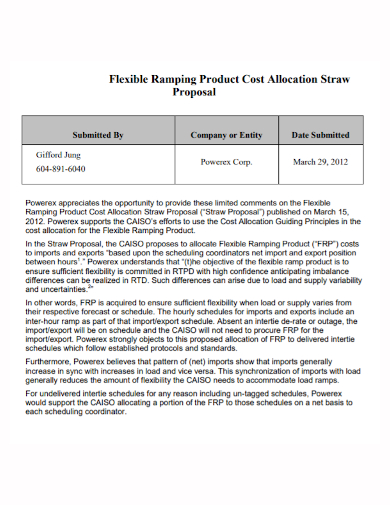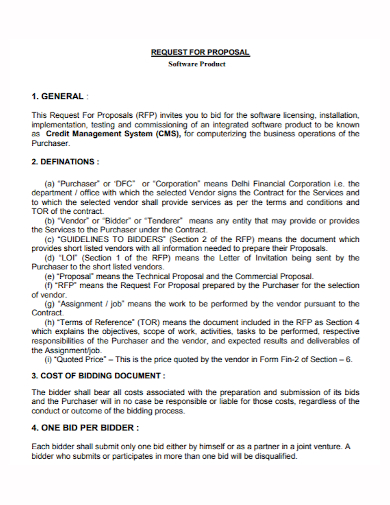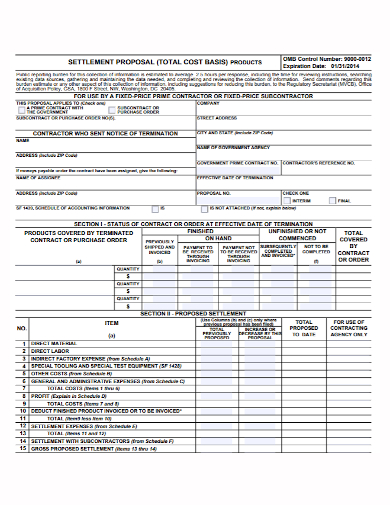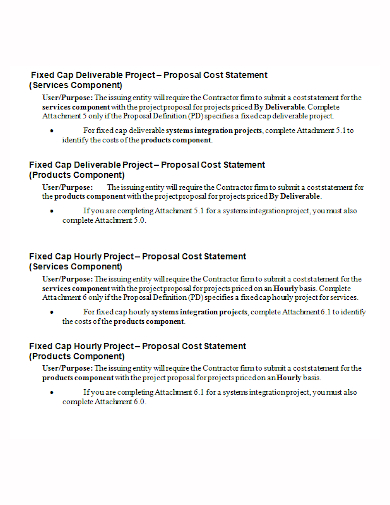Product costs proposals, also known as price proposals, are the type of proposals you hand out to clients or customers regarding a product’s price for sale. Proposing to clients can be a tricky process since you have to analyze the situation as well as your product’s quality and cost of producing them as factors in providing prices to products. If your price is too high, clients will turn don your proposal and if your price is too low, you’re not gaining any revenue since it won’t cover your expenses. However, at most times, what you charge does not always a make or break factor of getting your proposal approved. Sometimes it is also in the way of how you present your prices to the clients. This article will guide you on how to make a product cost proposal for you to present to your clients.
3+ Product Cost Proposal Samples
1. Flexible Product Cost Proposal
2. Software Product Cost Proposal
3. Product Cost Settlement Proposal
4. Product Cost Project Proposal
What are Product Costs?
Product costs are the incurred expenses when a business is creating a product intended to sell to customers. Product costs include these three basic categories: direct material, direct labor, and manufacturing overhead.
- Direct material: These are the costs of raw materials or parts that will be used to manufacture products.
- Direct labor: These are the costs to compensate employees directly involved in manufacturing and producing the products. These come in form of salaries, benefits, and insurance.
- Manufacturing overhead: These are the costs that are related to the machinery, tools, equipment used to manufacture the products. This category can also include indirect costs such as indirect materials and indirect labor. Indirect materials are materials that are used in the production process but are not directly included in the products. Indirect labor is those workers not directly involved in the production process. They could be working as security or quality assurance.
How to Make a Product Cost Proposal
1. Use the Bundle Pricing Technique
Bundling pricing is a technique done by pairing two or more complementary products or services together and selling them for a single price. It’s a clever way for businesses to upsell and cross-sell their products or services to benefit both their customers and revenue goals. When you do this technique ensures that you have enough products or services to sell as a bundle and that your customers prefer to buy the bundles. To sum it up, make sure your business is the right fit for this technique.
2. Present a Benefit or Solution
When you communicate your price cost proposal, present all the benefits of the products or what solutions the services can provide to customers. Explain the value, expertise, and competency that justifies the price of your products or services.
3. Offer Multiple Options
If you only list one pricing option in your proposal, your clients will have second thoughts on going through with it. Offer more flexibility by presenting multiple options or packages through tiered pricing. Tiered pricing should make sense from a value perspective of your client for them to know what exactly to expect in each option and they have the freedom to choose which pricing they are most satisfied with. You can do tiered pricing by using value, standard, and premium packages, for example. Try to limit with 3-4 options so you don’t overwhelm your clients with too many options.
FAQs
What are the different pricing strategies used by businesses?
The pricing strategies that are commonly used are:
- Value-Based Pricing: This is a strategy used by businesses to price products and services at a rate that they believe consumers will be willing to pay. The product may be marketed as having high-quality materials and so, consumers are going to perceive the product as costing more than compared to other similar products in the market.
- Competitive Pricing: This involves setting prices close to the business’s competition. When the business knows how much their competition is charging, they will set the prices lower, similar, or slightly higher prices compared to the competition.
- Cost-Plus Pricing: This is one of the simplest ways to determine prices and because of this, a lot of businesses use this strategy as their primary strategy. It focuses on the cost of producing your goods or services
What is the difference between product and period costs?
Product costs are incurred to manufacture and produce products while period costs are the exact opposite, they have not incurred anyhow during the production process. Examples of period costs are marketing costs, audit fees, or office rent.
Writing a cost proposal can be challenging since it takes a lot of work and concentration to avoid mistakes and inaccuracies. However, take your time to write your proposal according to your client’s needs and style, and make sure to revise it when you’re done. You can also ask for help from a colleague to review your proposal. To help you get started on writing the proposal, download our free sample templates provided above!
Related Posts
FREE 9+ Sample Quote Proposal
FREE 9+ Sample Product Proposal Letter
FREE 8+ Fee Proposal Samples
FREE 7+ Music Video Proposal Samples
FREE 6+ Film Sponsorship Proposal Samples
FREE 5+ Farm Price Index Samples
FREE 4+ IT Product Proposal Samples
FREE 12+ Quotation Proposal Samples
FREE 11+ Branding Proposal Samples
FREE 10+ Multimedia Proposal Samples
FREE 10+ Multimedia Proposal Samples
FREE 9+ Marketing Proposal Samples
FREE 9+ Product Sales Proposal Samples
FREE 9+ Branding Proposal Samples
FREE 7+ Advertising Quotations




